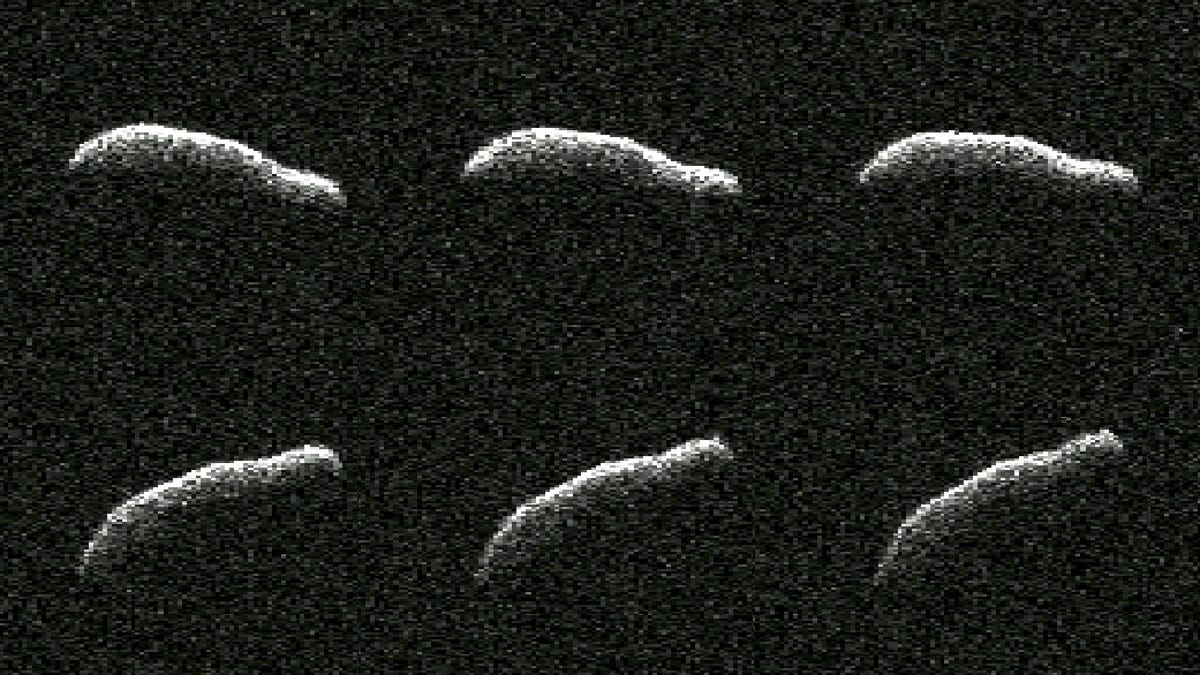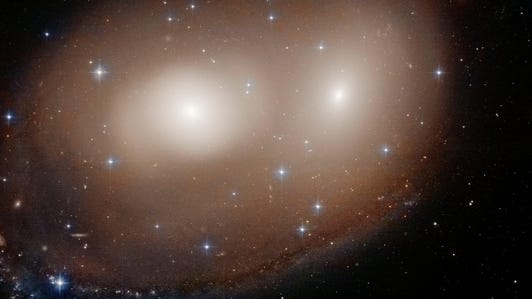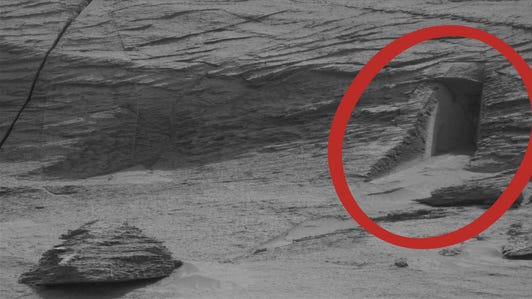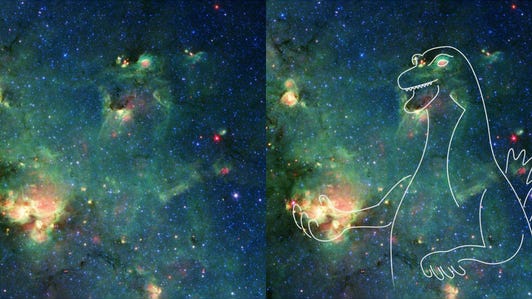
Six radar views of asteroid 2011 AG5 after its close approach to Earth in early February 2023.
NASA/JPL-Caltech
When I think of asteroids in the abstract, I tend to imagine them as big roundish balls of rock dashing through space and occasionally causing excitement on Earth. In early February, NASA captured radar views of asteroid 2011 AG5 and discovered it was an oddball for its distinctly oblong shape.
The asteroid made a close approach to our planet on Feb. 3, passing at a plenty safe distance of 1.1 million miles (1.8 million kilometers). NASA’s Jet Propulsion Laboratory scrutinized the space rock as it went by to learn more about its size, shape and orbital path. New data shows it’s roughly 1,600 feet (500 meters) long and 500 feet (150 meters) wide, what NASA describes as “dimensions comparable to the Empire State Building.”
Researchers used the Goldstone Solar System Radar antenna dish in California to get a better look at 2011 AG5. “Of the 1,040 near-Earth objects observed by planetary radar to date, this is one of the most elongated we’ve seen,” JPL scientist Lance Benner said in a NASA statement.
Spooky space images show creepy side of the cosmos






+31 more
See all photos
The radar imaging revealed other characteristics of the asteroid. It’s extremely dark, but has some noticeable darker and lighter regions. It’s slow to rotate, taking nine hours to go for a spin.
Scientists first discovered the asteroid in 2011. An initial analysis suggested it had a small chance of impacting Earth, but the new data has refined its orbital path and ruled out an impact in the foreseeable future. It is scheduled to come in for a close but safe approach of 670,000 miles (1.1 million kilometers) in 2040.
NASA is constantly looking for, cataloging and studying asteroids, especially ones that might have a close brush with our planet. Asteroid 2011 AG5 joins a choice group of funky space rocks, including an asteroid shaped like a hippo and one that resembled a skull on radar. We can now add an iconic New York City skyscraper to the asteroid lookalike list.
